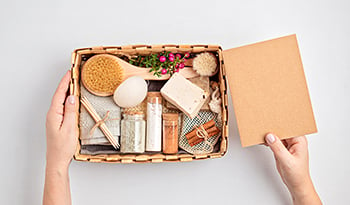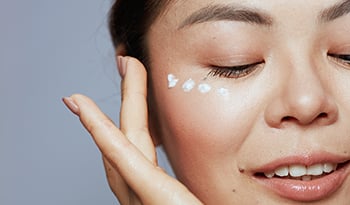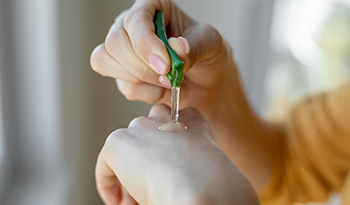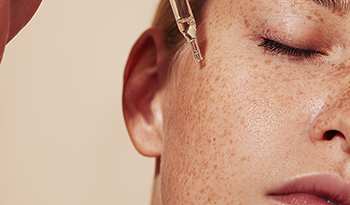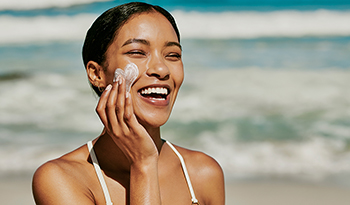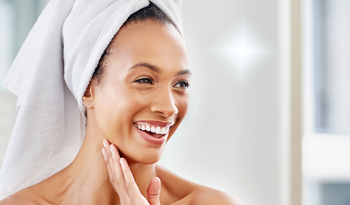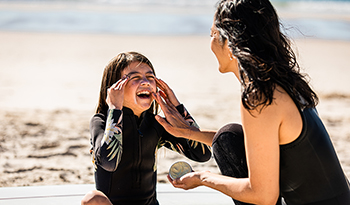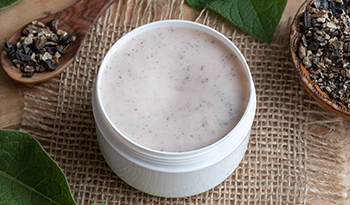Przewodnik iHerb Beauty po J-Beauty
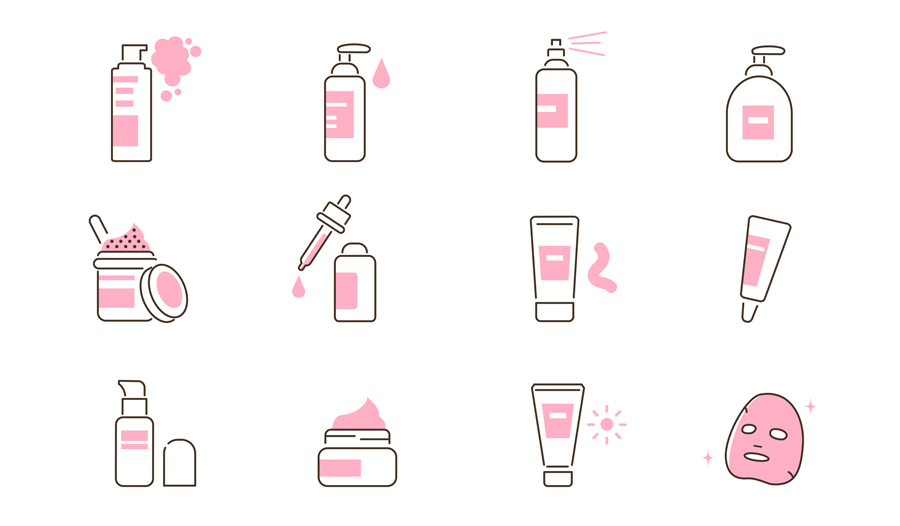
Od kilku lat koreańskie piękno - znane również jako K-beauty - jest w modzie. Wygląda na to, że azjatycka pielęgnacja skóry jest tutaj na stałe, i to nie dlatego, że jest zabawna i kiczowata, ale dlatego, że jest naprawdę skuteczna. Jeśli wolisz, aby Twoja pielęgnacja skóry była prostsza niż popularny 10-etapowy proces K-beauty, ale nadal chcesz spróbować czegoś nowego, możesz spojrzeć na inną literę alfabetu: J.
Zgadza się. J-beauty (lub japońskie piękno) może być azjatyckim schematem pielęgnacji skóry dla Ciebie. Być może nawet nieświadomie używałeś wcześniej niektórych japońskich produktów kosmetycznych. Czy wiesz, że podwójne oczyszczanie, maseczki w płachcie i esencje wywodzą się z Japonii? Niektóre z najpopularniejszych, kultowych produktów do pielęgnacji skóry na rynku pochodzą z Japonii.
Jeśli słyszałeś o japońskim lub J-beauty i zastanawiałeś się, co to do cholery jest, czym różni się od K-beauty i jakie są korzyści, nie szukaj dalej. Dzisiaj zamierzamy dogłębnie zbadać J-beauty, abyś mogła zdecydować, czy jesteś gotowa na włączenie tej filozofii pielęgnacji skóry do swojego życia kosmetycznego.
Czym różni się J-Beauty od tego, co znamy?
Japońska filozofia pielęgnacji skóry koncentruje się na podejściu proaktywnym, a nie reaktywnym. Głównym celem J-beauty jest odżywienie skóry, aby stała się naturalnie świetlista, miękka, promienna, nawilżona i zdrowa. Naturalny blask bez wysiłku jest tym, o co chodzi w rutynie J-beauty.
Większość z nas zna już podstawy pielęgnacji skóry J-beauty: oczyszczanie, tonizowanie i nawilżanie skóry. Ale jeśli chcesz tego blasku, według J-beauty, musisz pójść o kilka kroków dalej.
Podstawowe codzienne kroki rutynowej pielęgnacji skóry J-Beauty obejmują podwójne oczyszczanie, nawilżanie esencją lub balsamem, pielęgnację serum i nawilżanie skóry. Ochrona przeciwsłoneczna, złuszczanie i okresowe maskowanie są również składnikami tej korzystnej rutyny.
Podczas gdy większość z nas na Zachodzie jest przyzwyczajona do nakładania grubej warstwy kremu nawilżającego, japońskie piękno polega na stosowaniu lekkich serum, balsamów, emulsji, żeli i mleczek, które bardzo łatwo wchłaniają się w skórę. Dzięki cienkiej konsystencji produkty te łatwo się nakładają i nie obciążają skóry.
Czym różni się J-Beauty od K-Beauty?
Być może K-beauty szturmem zdobyło zachodni świat dzięki modnym opakowaniom i licznym krokom pielęgnacyjnym, ale J-beauty to odświeżająca zmiana dla tych z nas, którzy wolą bardziej usprawnione, wyselekcjonowane rutyny.
Zarówno J-beauty, jak i K-beauty koncentrują się na czystej, świetlistej skórze, nawilżeniu i znaczeniu ochrony przeciwsłonecznej. Istnieje jednak wiele kluczowych różnic między nimi.
K-Beauty
K-beauty kładzie duży nacisk na natychmiastowe rezultaty, kolorowe opakowania, sztuczki, trendy i niezwykłe składniki (śluz ślimaka, ktokolwiek?). Prawdopodobnie najbardziej znani ze swojego rozbudowanego, wieloetapowego schematu pielęgnacji skóry, prostota nie jest tutaj częścią gry. Ostatecznym celem rutyny K-beauty jest dokładne nawilżenie i uzyskanie "szklanej skóry" - skóry bez porów, świetlistej i półprzezroczystej.
Reżim K-beauty składa się zazwyczaj z 10 kroków, ale może obejmować nawet 15 kroków (lub zaledwie 5 kroków, jeśli naprawdę starasz się usprawnić). Bez względu na to, ile kroków obejmuje, typowa rutyna K-beauty obejmuje trzy rzeczy:
- Esencje faktycznie pochodzą z Japonii, ale zyskały popularność dzięki K-beauty. Esencja to niezwykle lekki, wodnisty płyn, który zapewnia intensywne nawilżenie, jednocześnie przygotowując skórę, dzięki czemu produkty nakładane na nią są łatwiej wchłaniane. Więcej o esencjach powiemy poniżej.
- Ampułki zazwyczaj zawierają wysokie stężenie składników aktywnych i są znane z tego, że są nawet silniejsze niż serum.
- Maseczek w płachcie jest mnóstwo! Jestem przekonana, że wzrost popularności K-beauty wynika głównie z popularności maseczek w płachcie. Istnieje tak wiele marek, jak wiele jest masek na każdy problem skórny, jaki możesz sobie wymarzyć.
Jeśli jesteś osobą, która lubi rytuał pielęgnacji skóry i lubi różnorodność, zabawne opakowania i zabawę różnymi teksturami i formułami, K-beauty będzie dla Ciebie marzeniem.
J-Beauty
Japońskie piękno jest znacznie bardziej proste, uproszczone i wyrafinowane. Zapomnij o sztuczkach, jasnych, zabawnych kolorach, a przede wszystkim o 10-15 krokach. J-beauty działa na dłuższą metę, wykorzystując naukę i technologię do uzyskania zauważalnych rezultatów.
J-beauty koncentruje się na bardziej uproszczonej estetyce projektu i wykorzystuje tylko kilka przemyślanych kroków, które obejmują wielozadaniowe produkty, aby zapewnić maksymalną skuteczność. Ten wyselekcjonowany schemat pielęgnacji skóry został zaprojektowany tak, aby zapewnić Ci dokładnie to, czego potrzebujesz.
W przeciwieństwie do "szklanej skóry", celem rutyny J-beauty jest "skóra mochi", o pulchnej, elastycznej i gładkiej teksturze, bez cienia suchości.
Podstawowy japoński schemat pielęgnacji urody obejmuje:
- Balsam lub esencja , która jest wklepywana w skórę. Zapewniają one intensywne, nietłuste nawilżenie dzięki zastosowaniu naturalnych składników. Ich wodnista konsystencja pozwala na głęboką penetrację skóry.
- Podczas gdy SPF jest istotnym składnikiem zarówno w K-beauty, jak i J-beauty, Japonia jest znana z zaawansowanych formuł ochrony przeciwsłonecznej.
- Oleje są bogate w japońską pielęgnację skóry. Służą one zarówno do usuwania makijażu podczas podwójnego procesu oczyszczania, jak i do nawilżania skóry.
Jako osoba wielozadaniowa, doceniam piękno i prostotę rutyny J-beauty dla zabieganych kobiet.
Idealna codzienna rutyna J-Beauty
Postępuj zgodnie z tymi podstawowymi krokami, a będziesz na dobrej drodze do pięknej, świetlistej i promiennej skóry.
Krok 1: Podwójne oczyszczanie
Ważnym elementem japońskiego piękna jest podwójne oczyszczanie. Wielu ludzi Zachodu włącza podwójne oczyszczanie do swojej nocnej rutyny, nie zdając sobie sprawy z jego historii. Ten rytuał oczyszczania sięga aż do XIV wieku, kiedy to olejowe środki czyszczące były niezbędne do usunięcia tradycyjnego, uporczywego białego podkładu noszonego przez japońskie kobiety. Następnie użyto pieniącego się środka czyszczącego, aby usunąć wszelkie pozostałości oleju.
W przypadku podwójnego oczyszczania pierwszy krok ma na celu delikatne usunięcie tego, co znajduje się na skórze, bez zdzierania powierzchni, pozostawiając Twoją skórę nagą. Drugi krok usuwa brud, olej i oczyszcza pory, dzięki czemu skóra jest oczyszczona, przygotowana i gotowa na kolejne kroki pielęgnacji. Porozmawiajmy teraz o procesie podwójnego oczyszczania i stosowanych produktach.
Podwójne oczyszczanie: Część 1
Pierwszym krokiem podwójnego oczyszczania jest usunięcie makijażu za pomocą olejku oczyszczającego. Balsamy mogą być również używane na tym etapie, choć bardziej powszechne są olejki oczyszczające.
Można by pomyśleć, że stosowanie bogatego balsamu lub olejku oczyszczającego może powodować wypryski lub zatykać pory. Wręcz przeciwnie, produkty te skutecznie usuwają nadmiar sebum, uporczywy makijaż, tusz do rzęs (tak, nawet wodoodporny) i filtr przeciwsłoneczny, jednocześnie odżywiając skórę.
Oczyszczanie olejkiem (lub balsamem) jest pierwszym krokiem japońskiej rutyny pielęgnacyjnej na noc.
Produkty do wypróbowania:

Sekkisei Treatment Cleansing Oil: Ten jedwabisty i łagodny olejek oczyszczający wykorzystuje mieszankę oleju z łez Hioba (Coix Seed), oleju sezamowego i oleju z krokosza barwierskiego, aby rozbijać (nawet wodoodporny) makijaż i odblokowywać pory, jednocześnie dokładnie spłukując.
Podwójne oczyszczanie: Część 2
Po spłukaniu olejku lub balsamu ze skóry wodą, użyj delikatnego pieniącego się środka myjącego, aby dokładnie oczyścić skórę i przygotować ją do kolejnych etapów pielęgnacji.
Ze względu na ten dokładny, ale delikatny proces podwójnego oczyszczania, wiele kobiet uważa, że rano mogą oczyszczać się tylko wodą. Jeśli jednak czujesz, że woda to dla Ciebie za mało, dopuszczalne jest oczyszczanie delikatnym pieniącym się środkiem myjącym.
Produkty do wypróbowania:

Hada Labo Gokujyun Face Wash: Ten kremowy, delikatny produkt do mycia twarzy zachowuje naturalne nawilżenie Twojej skóry podczas mycia. Nie zawiera oleju mineralnego ani barwników, ma zrównoważone pH, jest bezzapachowy i niekomedogenny.

Rosette Cleansing Paste Kaidei Smooth: Ta pianka oczyszczająca zwęża pory i pochłania nadmiar sebum. Zawiera bogatą w minerały glinkę morską i ekstrakt z owoców róży. Jest bezzapachowy i nie zawiera oleju mineralnego ani sztucznych barwników.

Sana Zubo Labo Facial Cleansing Lotion Sheet For Morning: Masz mało czasu? Te arkusze oczyszczające zostały zaprojektowane tak, aby delikatnie oczyszczać, nawilżać i złuszczać skórę, usuwając pot, oleje, brud i martwe komórki naskórka, które gromadzą się przez noc. Skóra jest jaśniejsza i bardziej nawilżona, dzięki czemu makijaż wygląda na niej lepiej. Idealny na pośpieszne poranki i w podróży.
Krok 2: Odżywki do skóry
Odżywki do skóry w japońskiej pielęgnacji skóry są zwykle określane jako pierwsze esencje lub balsamy. Podobnie jak toniki, są one stosowane jako etap po oczyszczeniu i również mają wodnistą konsystencję. Na tym jednak podobieństwa się kończą. Główną różnicą między japońskimi balsamami a zachodnimi balsamami (lub tym, co jest powszechnie znane jako toniki) jest to, że te odżywki do skóry nigdy nie są szorstkie i nie zawierają właściwości ściągających. Wiele z nich nie ma zapachu i po nałożeniu na skórę przypomina wodę.
Japońskie balsamy i esencje zawierają korzystne składniki, które mają na celu nawilżenie i zmiękczenie skóry, a nie jej zdzieranie.
W rzeczywistości zastosowanie odżywki do skóry przed nawilżeniem skóry zwiększy jej elastyczność i jędrność. Ze względu na dodatkową zawartość wody, skóra będzie wyglądać na jaśniejszą i zdrowszą. Niejednokrotnie balsamy i esencje mają również inne korzystne właściwości pielęgnacyjne i przeciwstarzeniowe. Typowymi składnikami odżywek do skóry są aloes, kwas hialuronowy i ceramidy.
Ze względu na swoją konsystencję i składniki, odżywki do skóry łatwiej wchłaniają się w skórę niż inne rodzaje produktów do pielęgnacji skóry. Są również w stanie głębiej wniknąć w skórę i pomóc przygotować ją do łatwiejszego przyjęcia produktów, które zostaną na nią nałożone.
Esencje i balsamy mogą być stosowane rano i wieczorem i powinny być wyciskane lub wklepywane w skórę palcami, a nie przesuwane po powierzchni wacikiem.
Produkty do wypróbowania:

Hada Labo Gokujyun Hydrating Lotion: Zawierający trzy różne rodzaje kwasu hialuronowego i dodatkowe substancje nawilżające, ten balsam nawilżający jest supergwiazdą z kultowymi zwolennikami nie bez powodu.

SK-II Facial Treatment Essence: To złoty standard esencji. Opatentowany przez markę ekstrakt PiteraTM wykorzystuje ekskluzywny proces fermentacji i zawiera mnóstwo minerałów, witamin i aminokwasów. Użytkownicy przysięgają na tę esencję za radykalną poprawę tekstury i wyglądu ich skóry. Esencja SK-II Facial Treatment Essence jest niezmiennie bestsellerem marki.

Odżywka do skóry Naturie Hatomugi: Ta odżywka do skóry wykorzystuje Hatomugi, jadalną roślinę jęczmienia znaną również jako Łzy Hioba, często spotykaną w japońskiej pielęgnacji skóry, herbacie i ziołolecznictwie. Ma nie tylko właściwości przeciwzapalne, ale także łagodzi, odświeża i nawilża. Esencja Hatomugi zawiera 12 aminokwasów i jest bogata w witaminy z grupy B i białko, odsłaniając bardziej nawilżoną, zdrową skórę.
Krok 3: Serum
Serum zawiera większość dobroczynnych witamin i składników aktywnych, które są nakładane na skórę i rozwiązują określone problemy skórne, takie jak drobne linie, zmarszczki, plamy, suchość lub matowość. Serum jest często mylone z balsamami i esencjami, ale ma nieco gęstszą konsystencję i zazwyczaj wyższe stężenie składników aktywnych.
Produkt do wypróbowania:

Sana Honeyshca All In One Serum: To serum to serum wzmacniające 3 w 1, balsam i mleczko nawilżające, które pozostawia skórę świeżą i nawilżoną. Jego mieszanka surowego mleczka pszczelego, wody różanej i miodu z łatwością wnika w skórę, nie pozostawiając filmu ani osadu.
Krok 4: Środki nawilżające
Japońskie piękno koncentruje się na nakładaniu warstw, dzięki czemu skóra nie jest obciążona ciężkimi produktami. Zamiast nakładać ciężkie kremy, J-beauty stosuje żele, kremy żelowe, mleczka i emulsje, aby dodać skórze wilgoci, jednocześnie uszczelniając składniki aktywne i nawilżenie pod spodem.
Produkty do wypróbowania:

Hada Labo Gokujyun Hydrating Milk: To mleczko do skóry o lekkiej konsystencji zapewnia głębokie nawilżenie i nawilżenie, dzięki czemu skóra pozostaje miękka i gładka w dzień i w nocy. Nie zawiera oleju mineralnego, barwników ani substancji zapachowych. Niekomedogenny i o zrównoważonym pH.

Sana Nameraka Isoflavone Facial Milk: To mleczko do skóry zawiera esencję sojową i jest wzbogacone białkiem sojowym i izoflawonami. Zwiększa poziom kolagenu i kwasu hialuronowego, które poprawiają elastyczność i nawilżają skórę. To nieklejące się mleczko nie zawiera substancji zapachowych, barwników ani olejów mineralnych.
Krok 5: Ochrona przeciwsłoneczna
Jeśli istnieje jeden produkt do pielęgnacji skóry, z którego Japonia jest najbardziej znana, musi to być ochrona przeciwsłoneczna. Czy wiesz, że system oceny UVA został opracowany w Japonii? Zgadza się! W pewnym momencie wiedzieliśmy tylko, ile SPF (ocena UVB) zawiera dany filtr przeciwsłoneczny. Dzięki zaawansowanej japońskiej technologii jesteśmy teraz w stanie sprawdzić, jaki poziom ochrony przed promieniowaniem UVA zapewnia dany produkt przeciwsłoneczny, patrząc na jego ocenę od PA+ do PA++++.
Japońskie filtry przeciwsłoneczne znane są z szybko wchłaniających się, skutecznych, gładkich i nieklejących konsystencji. Japońskie kobiety codziennie stosują filtry przeciwsłoneczne, bez względu na to, dokąd się udają i co robią, zarówno w pomieszczeniach, jak i poza nimi. To ma sens, że japońskie filtry przeciwsłoneczne są kosmetycznie eleganckie i mają jedne z najlepszych formuł na świecie. Jeśli jeszcze ich nie wypróbowałeś, być może nadszedł czas!
Produkt do wypróbowania:

Shiseido Urban Environment Tinted UV Protector For Face (SPF 43): Shiseido ma jedne z najlepszych japońskich filtrów przeciwsłonecznych na rynku. Urban Environment jest lekki, bezolejowy, wodoodporny i posiada filtr SPF 43 o szerokim spektrum działania. Jest to doskonały filtr przeciwsłoneczny do stosowania pod makijaż, ponieważ nadaje odrobinę koloru, aby wyrównać koloryt skóry, a także lekki (nietłusty) blask. Urban Environment jest zalecany do codziennego stosowania przez Skin Cancer Foundation i jest również niekomedogenny.
Cotygodniowe kroki do poprawy rutyny J-Beauty
Niektóre japońskie rytuały pielęgnacyjne nie muszą być wykonywane codziennie, aby były skuteczne. Dodanie dodatkowego kroku lub dwóch do schematu pielęgnacji skóry tylko raz lub dwa razy w tygodniu może stać się rozpieszczającą przyjemnością i może jeszcze bardziej poprawić stan skóry.
Środki złuszczające
W japońskiej kosmetyce nie znajdziesz ostrych peelingów ani narzędzi. Wiele zachodnich peelingów zawiera składniki takie jak skorupki moreli lub cukier, które mogą powodować drobne, niewidoczne mikropęknięcia skóry. W japońskiej kosmetyce, w której delikatność jest zawsze lepsza, nie jest to zalecane.
Zamiast tego znajdziesz żele i gommage, które zapewniają delikatne, miękkie złuszczanie. Japońskie środki złuszczające są nakładane na suchą skórę, gdzie wiążą się z olejkami do twarzy i tworzą małe kulki. Podczas masażu i złuszczania skóra staje się jaśniejsza i zdrowsza.
Złuszczanie raz w tygodniu jest wystarczające, chociaż osoby z tłustą / mieszaną skórą mogą chcieć złuszczać dwa razy.
Produkty do wypróbowania:

Meishoku Detclear Bright & Peel Fruits Peeling Jelly (Mixed Fruit): Ta galaretka peelingująca zawiera zarówno AHA, jak i BHA, aby odsłonić jaśniejszą, zdrowszą skórę. Pomaga usunąć zaskórniki, martwe komórki naskórka i nadmiar sebum.

Rosette Gommage Face Cleansing Gel: Ten lekki żel oczyszczający odsłania zdrowszą, jaśniej wyglądającą skórę, szybko i łatwo usuwając martwe komórki naskórka. Żel zawiera kwasy AHA, dzięki czemu oczyszcza pory i przygotowuje skórę do lepszego wchłaniania produktów pielęgnacyjnych.

Cure Natural Aqua Gel: Ten delikatny żel oczyszczający jest wykonany z aktywowanej wody wodorowej, aby usunąć warstwy suchej, martwej lub szorstkiej skóry. Może być nawet stosowany na innych częściach ciała, na których mogą gromadzić się martwe komórki naskórka, takich jak łokcie, szyja i kolana.
Masaż limfatyczny
Regularne wykonywanie masażu limfatycznego może zmniejszyć widoczność porów, opuchlizny i zmarszczek. Wiadomo również, że poprawia koloryt skóry i krążenie, a także zwiększa elastyczność skóry, poziom kolagenu i oczywiście drenaż limfatyczny. Można to osiągnąć za pomocą wałka do twarzy lub masując twarz dłońmi. Tak czy inaczej, wyświadczasz swojej twarzy ogromną przysługę!
Maskowanie
Proste maseczki w płachcie są podstawą każdej japońskiej rutyny pielęgnacyjnej. Pomyśl o maseczce jak o cotygodniowym zabiegu rozpieszczającym. Zachęcamy do wypróbowania różnych masek, aby zobaczyć, co odpowiada Twoim potrzebom w danym momencie.
Produkty do wypróbowania:

Kracie Hadabisei 3D Moisturizing Facial Mask for Super Suppleness: Ta bogata w składniki odżywcze maseczka nawilżająca wykorzystuje kolagen, aby odsłonić bardziej promienną, jędrną i czystą skórę. Zapewnia intensywne nawilżenie dzięki trójwymiarowemu dopasowaniu, dostarczając wyjątkowych składników zmiękczających keratynę, które są idealne do przeciwdziałania starzeniu.

Saborino Morning Face Mask Fresh: Te maseczki to smakołyki 3 w 1, które zapewniają oczyszczanie, tonizowanie i podkład w jednym! Masz tylko 60 sekund na pielęgnację skóry? Żaden problem! Maseczki te zapewniają komfortowy efekt liftingu, napinając skórę i ułatwiając nakładanie makijażu.

SK-II Facial Treatment Mask : Kolejny kultowy faworyt i bestseller SK-II, ten zestaw masek w płachcie zawiera dodatkowe stężenie PiteraTM. Każda bawełniana maska jest nasączona tym ekstraktem dla maksymalnej penetracji skóry. Ze względu na intensywne nawilżenie i zatrzymywanie wilgoci, skóra wydaje się jaśniejsza natychmiast po aplikacji. W rezultacie tekstura skóry jest gładsza i bardziej jędrna.
Czy J-Beauty pomoże Ci osiągnąć cele w pielęgnacji skóry?
Japońskie procedury i produkty kosmetyczne od wielu lat przynoszą piękne rezultaty w zakresie przeciwdziałania starzeniu się i tekstury skóry. Tak więc, jeśli Twoim celem jest zrównoważona, spokojna i nawilżona skóra, dzięki czemu możesz nosić mniej makijażu, może to być po prostu schemat pielęgnacji, którego potrzebujesz.
W zależności od aktualnej rutyny pielęgnacyjnej, J-beauty może, ale nie musi zająć więcej czasu. Być może nie jesteś jeszcze gotowa na całkowitą zmianę pielęgnacji skóry. W takim przypadku włączenie produktów J-beauty do obecnej rutyny może nadal mieć ogromny wpływ na jej czystość, wygląd i kondycję.
Jest coś, co można powiedzieć o prostej, usprawnionej rutynie pielęgnacji skóry, która jest stosowana od setek lat. Kiedy coś działa, to działa. Wystarczy spojrzeć na wspaniałą skórę Japonek, które od wieków stosują J-beauty w praktyce. Hej, warto spróbować, prawda?
WYŁĄCZENIE ODPOWIEDZIALNOŚCI:Celem niniejszej Strefy Zdrowia nie jest stawianie diagnoz...

















































































 Spis treści
Spis treści



